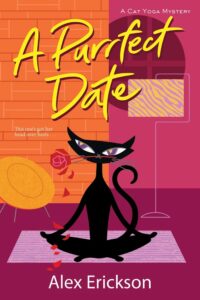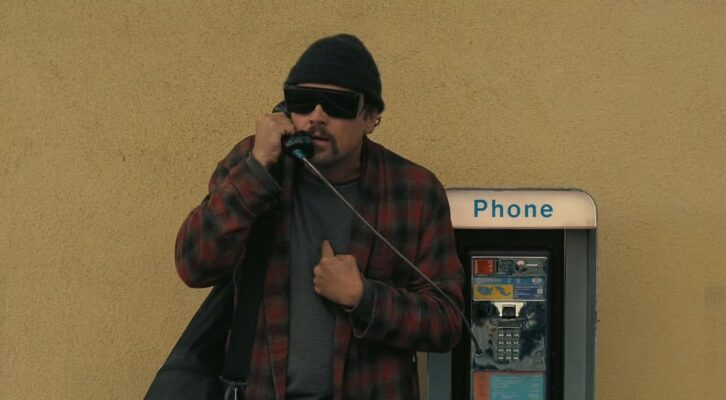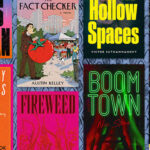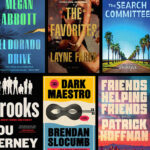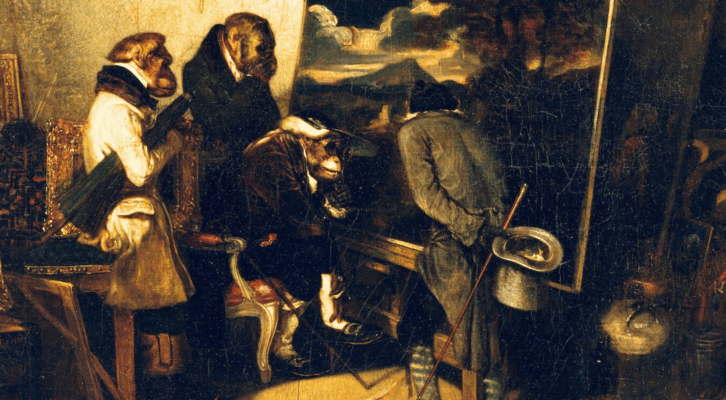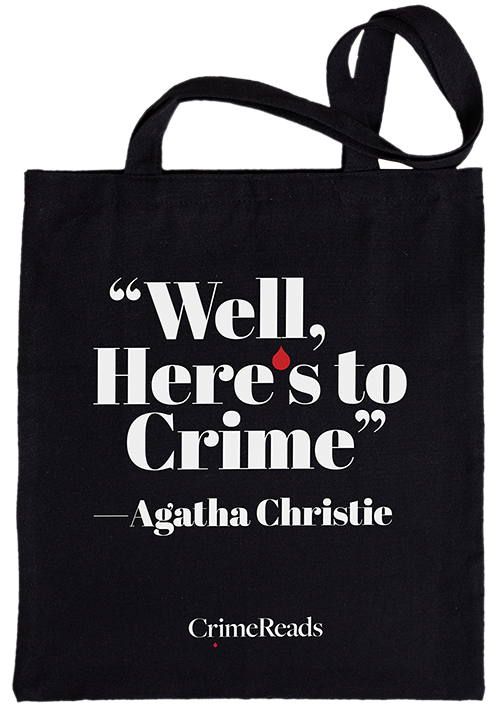“Where do you get your ideas?”
It’s a common enough question, yet it’s one I find to be near impossible to answer. I do my best to mutter something semi-coherent, but often, it comes out sounding more like, “Magic!” more than anything that would actually help someone understand how my mind works. I suppose that’s because even I don’t know where I get my ideas. At least, not entirely.
Cozies are fun little romps where you follow your favorite amateur sleuth as they solve murder after murder in a small town full of lovable—or, at least, memorable—characters. There’s no blood or gore. No overly harsh language. No explicit sex. They’re tame. Fun. And everyone comes out of it all smiles (expect for the killer, of course).
Yet, deep down, there’s a hint of darkness to cozies that isn’t often considered. While a hefty portion of the story revolves around the life of the heroine (or in some cases, the hero), cozies are still books about murder. Someone ends up dead. Someone had to make them that way, often because of jealousy, rage or greed. They lie to cover their tracks. They sometimes frame others for their misdeeds. They often steal, commit other heinous acts, all in the name of self-preservation.
The fun for the reader—beyond checking in with the lively, fictional community they’ve come to know—is watching the villain get their comeuppance. How does our sleuth catch them? How will life get back to normal for everyone involved? You always have that happy ending where the horribleness of what just happened mostly gets swept under the rug or looked at askance, rather than tackled head on.
So, knowing all of this, how do I get my ideas?
It’s done in stages, really.
It all starts with the sleuth, the theme of the series, and what’s going on in the community. In an established series, that’s pretty easy to accomplish since I have all the previous novels to look back on. That informs a lot of the story, even the murder. It’s like the base of a tower that supports everything you’re going to stack atop it. It’s wide, safe, and ever-present.
But when it comes to the victim, the murder, and the why, it gets a smidge more complicated.
It would get boring fast if every murder happened for the same reason. The method would likewise grow old if every story had our sleuth solving an impromptu bludgeoning at the local coffee shop in which they worked. There needs to be variety, and for me, a deeper motive than just a sudden burst of rage. It’s not always overt. Oftentimes, I obscure much of the motive, only giving small clues sprinkled throughout the story about what it’s really about, especially in situations where I want to make a point without beating the reader over the head with it.
And those motives are often much, much darker than what you would normally get out of a cozy mystery.
This is where my interests come in. I don’t often read cozy stories or watch cozy-adjacent television. My tastes run on the darker side of murder. I like my books to be crime thrillers. Or horror novels, psychological and otherwise. In television, I tend to lean toward brutal crime dramas where serial killers are being chased, where the bodies are displayed in grisly detail. I want true crime documentaries that delve deep into the why things happened, beyond the surface level of the murder. Why does the killer think the way they do?
This isn’t something I could pluck 1:1 and drop into a cozy and call it a day. The readers would be horrified (as would my editor!) But I do get inspiration from these tales. And I can take elements of the stories, dissect them, and turn them into something a cozy reader could enjoy.
Let’s go through a hypothetical situation, shall we?
A couple goes on a trip together. To everyone who knows them, they seem like the perfect couple, though they have their issues, as everyone does. This trip is supposed to be a chance for them to get away from some of the stresses of life, reconnect with one another on a deeper level than they have been able to as of late. They leave town, the community goes on with their lives.
And then, after a short time away, only the husband returns.
A search follows. Questions are asked. By the police. By the media. The community. The husband insists the wife walked away, told him to go home, that she would call her family and stay with them. He says that while they are on the trip, they grew apart, had a fight, and that he didn’t want to cause further distress by forcing her to stay with him.
Eventually, the wife’s body is found. Evidence points to the husband, including surveillance cameras at gas stations and supermarkets, showing the two of them arguing, possibly getting physical. They find the weapon in his vehicle. Everyone suspected him from the start, and it turns out, he was the killer. He found out she’d cheated on him, so, in a fit of rage, he killed her and dumped her body.
This is a far too common story. You can find countless documentaries of similar make. The circumstances are different. The motive is often all over the place. But in a lot of cases, you can easily trace where things went wrong between the victim and the killer. And, often, go back through the killer’s history and find a root cause of their violent tendencies (if they have them, because not all of them do.)
Something like this wouldn’t work straight up as a cozy. The community doesn’t get involved. The details are often gruesome. And, to be frank, sexual assaults or perverse sexual satisfaction over the murder happens far too often. That most definitely wouldn’t fly in the cozy world.
And yet, I can still use it.
I might watch a three-part documentary detailing what happened during the fateful trip. I then go and do more research because you can’t fully trust everything you read and see. A documentary will often skew one way or the other, will provide details to make you feel a certain way, while leaving others out. In our example story above, perhaps the wife was physically and verbally abusive to her husband, along with cheating on him, and this is what caused the escalation in their conflict. This might be something a documentary would skip over, as not to tarnish the reputation of the victim, and to make the killer less sympathetic.
Once I have the details down, I pluck the bits that I think would be good for a story, mix them together with my established set of characters, the setting, the theme, and create something that might look nothing like the original story in which I got the inspiration from.
So, what might that look like?
We’d have our couple travel to our sleepy little cozy town instead of away from it. They’d arrive, looking to have a good time, to get away from their lives. Yes, they’d have some baggage between them, but this wouldn’t be revealed until later. They’d spend some time around our sleuth, around others in the area, including our favorite locations, and they would publicly fight, perhaps even check into separate rooms after a rather bad argument.
And then, one of them would end up dead.
From here, we take some of the details from the story that inspired us. The wife cheated and the husband found out. She was seen being verbally abusive toward him. He bought a hunting knife or some other item that could easily have been used as the murder weapon. It might even have been found in his car when he was about to leave town. He might have been about to head back home, leaving the wife behind, without knowing she was dead, which would make him look as if he were trying to run.
But we don’t use him as the killer. In real life, it’s those closest to the victim that often is the murderer, but we don’t want to use that here as anything more than a red herring. He’s too obvious. He does need to appear guilty, however. We want the reader to zero in on him, eye him with the same suspicion that the police might.
From there, we can look at who the wife cheated with and see if they’d work as our murderer. Perhaps the lover followed the couple on their trip, unbeknownst to them, and then he revealed the affair in dramatic fashion. Perhaps the wife meets someone in town and that is when and where the infidelity happened. Either way, this person could very well have killed the wife when she tries to break off further relations, saying she’s going back to her husband, who she truly cares for.
And if not him, what about someone they ran into in town randomly? A “hero” who tried to step in when the two were fighting. Perhaps he attempted to kill the husband because of some other interaction between them, but was surprised by the wife, and then, when she threatened to go to the police, he kills her instead and hurriedly covers his tracks by framing the husband, who the victim was publicly at odds with.
The possibilities are endless. I can pluck any element of the real story I like and twist it, then distill it so it works in a cozy setting. The real heart of the story is there. Our couple goes on a trip, one dies, while the other is viewed as the killer. We can use the circumstance. Maybe the method, in a bloodless way. We can use the motive and move pieces around to fit and to keep the reader guessing so that they may feel like they’ve heard—or read—this story before, but we still surprise them in the end.
I can do the same thing with a good book I’m reading. I might find some small element of the story, something that might not even connect directly to whatever crime I’m reading about, and turn it into a motive for my story. Sometimes it’s just a feeling of unease caused by a certain type of situation that gets the creative juices flowing. Sometimes it’s an incorrect theory about what happened that gets my mind churning. Or my brain takes off on a variant to what I’m reading, a sort of alternate timeline where I wonder how certain elements would interact if they’d intersected.
There’s also another place where I find a lot of inspiration for my stories: social media. And I don’t mean I’m reading stories about murders or other such crimes. I’m talking about how people behave online. It’s not often I can open a social media app and not be bombarded with excessive toxicity. There are far too many people who enjoy belittling others, who feel the need to attack anyone they deem as other.
And for as awful as it is, I do get inspired by it. These sorts of people make the perfect killers—or nasty red herrings, who you’d happily see be knocked down a few dozen pegs. And I don’t even have to change much about the real-life posts to make the character work as a jerk. For whatever reason, a lot of people let their darker side show online. Maybe they think the anonymity—even if they post under their real name and photo—protects them. It doesn’t. It just makes them a perfect villain for one of my stories.
It’s not easy taking this vileness and translating it to the page. But I do it. Sometimes, seeing the horrible things people say—and type—allows me to find the true “bad guys.” It’s not the TV villain, twirling his mustache, and proclaiming that they want to rule the world. In real life, bad people are usually simply petty people, who want to do nothing more than belittle others so they feel better about themselves. They make perfect, easy to access villains.
And, who knows? Perhaps somebody will one day see themselves in one of my books and realize that maybe, just maybe, they should attempt to understand people who are different than them, rather than act on their prejudices. And perhaps then they might change their ways enough to give me one less toxic person to be inspired by.
________________________


